That deep, burning pain that zips down your leg and hijacks your lower back? It’s not in your head—and you’re definitely not the only one dealing with it. Sciatica pain is more than just uncomfortable. It’s disruptive. It can make simple things like sitting, walking, or even sleeping feel like a battle.
We see it all the time at Proactive Health: patients who’ve tried it all—stretches, rest, meds, random YouTube routines—yet the pain keeps coming back. That’s because true relief doesn’t come from chasing symptoms. It comes from understanding what’s actually causing the problem—and then treating it with the right game plan.
Let’s walk through what sciatica really is, what causes it, and why physical therapy is one of the smartest ways to finally get on top of it.
What Is Sciatica, Really?
Here’s something a lot of people don’t realize: sciatica isn’t a condition—it’s a set of symptoms. The term refers to pain that comes from irritation or compression of the sciatic nerve, the longest and thickest nerve in your body. It runs from your lower back through your hips and down each leg.
When something presses on or inflames this nerve, you can feel:
- Sharp, radiating pain down one leg
- Tingling, burning, or numbness
- Muscle weakness
- Discomfort that’s worse when sitting or standing for long periods
In some cases, it feels like an electric jolt. Other times, it’s a constant dull ache. Either way, it’s a sign that your nervous system needs attention—not just pain pills.
The Real Reasons Sciatica Shows Up
Sciatica can come from a variety of root causes. Here are the ones we see most often:
1. Herniated or Bulging Discs
When a disc in your spine slips out of alignment, it can put pressure directly on the nerve roots.
2. Spinal Stenosis
This is when the space inside your spinal canal narrows, usually with age, leading to nerve compression.
3. Piriformis Syndrome
This one gets overlooked often. If your piriformis muscle (deep in your glute) gets tight or spasms, it can press on the sciatic nerve and create similar symptoms.
4. Degenerative Disc Disease
Over time, your spinal discs wear down. That can create instability, inflammation, and nerve pressure.
5. Lifestyle Habits
Long hours at a desk, poor posture, weak core muscles, and even the way you sleep can all make things worse.
6. Pregnancy
Shifting posture, added weight, and hormonal changes can irritate the sciatic nerve, especially in later trimesters.
7. Less Common Causes
Nerve-impacting conditions like diabetes, tumors, or past trauma can sometimes be part of the picture too.
Diagnosing Sciatica: Know the Signs (And When It’s More Serious)
Not all back or leg pain equals sciatica, but there are some telltale patterns. Here’s what typically sets it apart:
- Pain starting in the lower back or buttock and traveling down one leg
- Numbness or tingling in the leg or foot
- Pain worsens with long periods of sitting
- Muscle weakness in the affected leg
At Proactive Health, we combine clinical movement assessments with a full review of your symptoms. In some cases, we’ll refer you for imaging (like an MRI or X-ray) to confirm the root cause.
Warning signs to take seriously:
Call a doctor right away if you experience:
- Loss of bladder or bowel control
- Sudden, severe weakness in both legs
- Numbness in the inner thighs or groin (saddle anesthesia)
These symptoms may indicate a rare but serious condition called cauda equina syndrome, which is a medical emergency.
How Physical Therapy Actually Fixes Sciatica
Physical therapy works—when it’s done right. At Proactive Health, we focus on helping your body move the way it’s supposed to. That means addressing the mechanical, muscular, and nerve-driven factors behind your pain—not just stretching the area that hurts.
Here’s how we approach sciatica relief:
1. Movement & Postural Assessment
We watch how you stand, walk, bend, and sit to spot hidden restrictions or asymmetries.
2. Hands-On Manual Therapy
We use techniques to release tight muscles, improve joint mobility, and reduce pressure around the nerve.
3. Nerve Gliding Techniques
Sometimes the nerve gets “stuck” in the surrounding tissues. We use specific movements to help it glide smoothly again.
4. Strength + Stability Work
We build strength in your core, hips, and glutes to take pressure off your spine and reduce flare-ups long-term.
5. Smart Education
We coach you on how to sit, sleep, lift, and move without making things worse. This is where most DIY plans fall short.
What You Can Do Right Now at Home
Not quite ready to book an appointment? Here are a few ways you can get ahead of the pain starting today:
- Use ice during flare-ups, then switch to heat for tight muscles
- Try the McKenzie press-up technique (especially if your pain feels disc-related)
- Avoid long periods of sitting—set a timer to move every 30–45 minutes
- Gentle walking is better than lying down all day. Bed rest = bad idea
- Use a lumbar roll for low back support during the day
These tips can help manage symptoms, but they’re not a long-term fix. That takes a tailored plan and consistent strategy.
How to Keep Sciatica From Coming Back
You’ve got to treat the root—and then build habits that keep your system resilient. Here’s what we work on with our clients for long-term relief:
- Strengthening the deep core muscles and glutes
- Increasing hip and hamstring mobility
- Fixing sitting and standing posture (we’ll teach you tricks for both)
- Practicing proper lifting techniques
- Incorporating mobility work into your weekly routine
It doesn’t have to be complicated. A few smart tweaks in your daily habits can help you stay out of pain and off the injury rollercoaster.
You Don’t Have to “Live With It”
Here’s the deal: if you’ve been told sciatica is something you just have to deal with—or if the only advice you’ve gotten is “stretch more” or “try a different chair”—you deserve better.
At Proactive Health, we’re all about helping people actually solve the problems that are holding them back. No guesswork. No cookie-cutter plans. Just personalized care based on what your body needs.
Ready to get back to living without pain? Let’s figure out what’s really going on—and get to work fixing it, together. Book your evaluation now and take the first step toward real relief, stronger movement, and a healthier future.



